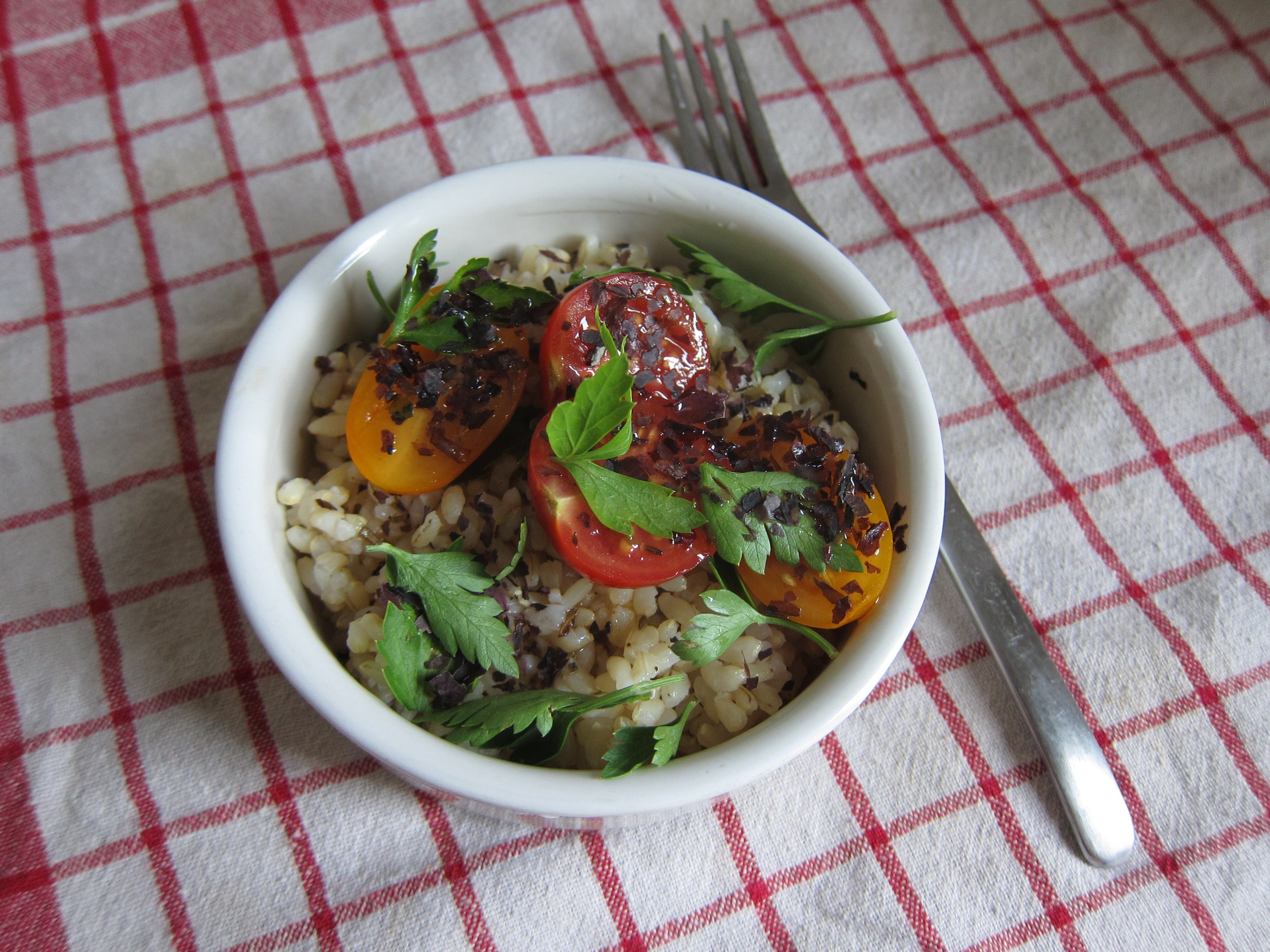What Do I Do with Dulse?


Even if you don’t know what “umami” means, you’ve probably heard the word lately. It was coined by Japanese chemist Kikunae Ikeda, who pinpointed the glutamate molecule present in a special group of foods that merge savory, tangy, and earthy flavors. Today the word “umami” has come to be known as “the fifth taste” (after sweet, salty, sour, and bitter), and has entered the culinary lexicon in kitchens throughout the world. You’ll find this fifth taste in foods like mushrooms, cheese, and soybeans.
Sea vegetables, too, are loaded with umami, and a good introduction to its palate-piqueing properties. I’m particularly fond of dulse, a purple seaweed often sold in flake form, for its ability to add a salty splash of color to dishes that need a bit of edible sparkle, like my simple lunch of brown rice and cherry tomatoes garnished with parsley and dulse, pictured above. I also like to sprinkle it over dressed salads (the dressing helps the dulse cling to your greens)—especially salads with other umami foods like tomato and asparagus.
Dulse also enhances the flavor of soups, including miso soup and even minestrone. Try adding dulse to your next batch of guacamole to amp up the rich flavor of the avocados. High in trace minerals including iodine and potassium, dulse gives a little nutritional boost whenever you use it, which I recommend doing often.
SHARE WITH US Do you do dulse? What’s your favorite way to use it?